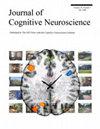Stopping Speed in Response to Auditory and Visual Stop Signals Depends on Go Signal Modality
IF 3.1
3区 医学
Q2 NEUROSCIENCES
引用次数: 0
Abstract
Past research has found that the speed of the action cancellation process is influenced by the sensory modality of the environmental change that triggers it. However, the effect on selective stopping processes (where participants must cancel only one component of a multicomponent movement) remains unknown, despite these complex movements often being required as we navigate our busy modern world. Thirty healthy adults (mean age = 31.1 years, SD = 10.5) completed five response-selective stop signal tasks featuring different combinations of “go signal” modality (the environmental change baring an imperative to initiate movement; auditory or visual) and “stop signal” modality (the environmental change indicating that action cancellation is required: auditory, visual, or audiovisual). EMG recordings of effector muscles allowed detailed comparison of the characteristics of voluntary action and cancellation between tasks. Behavioral and physiological measures of stopping speed demonstrated that the modality of the go signal influenced how quickly participants cancelled movement in response to the stop signal: Stopping was faster in two cross-modal experimental conditions (auditory go – visual stop; visual go – auditory stop), than in two conditions using the same modality for both signals. A separate condition testing for multisensory facilitation revealed that stopping was fastest when the stop signal consisted of a combined audiovisual stimulus, compared with all other go–stop stimulus combinations. These findings provide novel evidence regarding the role of attentional networks in action cancellation and suggest modality-specific cognitive resources influence the latency of the stopping process.对听觉和视觉停车信号的停车速度取决于围棋信号模式
过去的研究发现,动作取消过程的速度会受到引发动作取消的环境变化的感官模式/方式的影响。然而,尽管我们在繁忙的现代社会中经常需要做出这些复杂的动作,但对选择性停止过程(参与者必须只取消一个多成分动作中的一个成分)的影响仍然未知。
本文章由计算机程序翻译,如有差异,请以英文原文为准。
求助全文
约1分钟内获得全文
求助全文
来源期刊
CiteScore
5.30
自引率
3.10%
发文量
151
审稿时长
3-8 weeks
期刊介绍:
Journal of Cognitive Neuroscience investigates brain–behavior interaction and promotes lively interchange among the mind sciences.

 求助内容:
求助内容: 应助结果提醒方式:
应助结果提醒方式:


